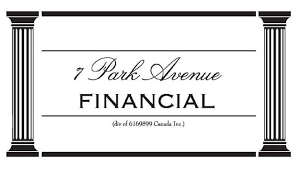|
How To Finance A Business Acquisition In Canada
Business Acquisition Financing
YOU ARE LOOKING FOR BUSINESS ACQUISITION FINANCING OPTIONS AND STRUCTURES!
BUSINESS ACQUISITION LOANS IN CANADA
You've arrived at the right address! Welcome to 7 Park Avenue Financial
Financing & Cash flow are the biggest issues facing businesses today
Unaware / Dissatisfied with your financing options?
Call Now! - Direct Line - 416 319 5769 - Let's talk or arrange a meeting to discuss your needs
Email - sprokop@7parkavenuefinancial.com

"Acquiring a business is easy. Paying for it is hard. Paying the right price in the right way is where the real value is created." - Warren Buffett
YOUR BUSINESS ACQUISITION LOAN
Entrepreneurs seek Business Acquisition Funding, but it's often poorly understood.
Proper financing is a key method in funding your acquisition plans to buy an existing business.... successfully!
The type of loan you require will depend on the target company's size, business model, and overall credit quality. Often, there is no single best option for all businesses because each situation requires a unique approach.
Are you..??????
Looking to convince a bank to finance a business purchase
Trying to close a deal when the seller wants all cash
Wanting to address the personal guarantee issue properly
Wondering how to fund working capital post-closing
Trying to understand the Government Loan as well as BDC options
Talk to the 7 Park Avenue Financial team about addressing those issues!
Conquering the Acquisition Funding Challenge
Finding capital for business acquisitions often feels like an insurmountable obstacle. Many Canadian entrepreneurs watch prime opportunities slip away due to financing limitations, creating frustration and stalled growth.
Let the 7 Park Avenue Financial team show you how a strategic approach to acquisition funding—combining traditional financing with alternative solutions—can transform this barrier into a pathway for business expansion.
The two most popular forms of financing for buying a business are commercial finance companies or bank financing, which offers lower interest rates to complement owner equity.
In other cases, mezzanine financing or asset-based lending will provide the capital you need to acquire the target company, albeit at higher rates. Still, with the capital you need to close the acquisition.
In many cases, the financing will be a mix of asset finance and cash flow /line of credit solutions.
Negotiating an optimal financing structure with senior and other lenders in advance is critical to making your acquisition go smoothly and without any problems. This will allow you to be well-positioned when looking for further growth opportunities post-acquisition.
WHAT IS THE BEST FINANCING STRUCTURE FOR YOUR BUSINESS?
Negotiating an optimal financing structure/capitalization plan is critical to making a successful business acquisition. and strategy - with enough funds available to run and grow sales revenues.
WHAT IS THE VALUE OF THE BUSINESS YOU ARE BUYING?
Many businesses are asset-intensive, so extensive due diligence must be undertaken regarding tangible assets such as fixed assets/equipment, inventories, and, in some cases, commercial real estate.
A key focus in valuation should always be a hard look at cash flows and depreciation policies - a good rule of thumb is to take a long-term average of cash flow.
Examine profit margins and focus on product and service improvement areas to improve those margins.
Buyers of a business will want to assess and remove any non-recurring costs as a part of their go-forward plan in raising debt or to raise capital to fund the acquisition - allowing for further improvement in valuation concepts around 'EBITDA'
OWNER EQUITY / DOWN PAYMENT
Your down payment / Equity investment is proof of commitment to the transaction in a typical financing package!
In Canada, buyers will have to demonstrate, via a down payment contribution, some percentage towards the buying price, and these funds can come from various sources such as savings, investments, etc, or partner contributions.
Equity participation can be a powerful tool in lender negotiations. It can also reduce borrowing costs, show the buyer's commitment to success, and help secure more capital for growth and operations.
It should not be a secret that lenders feel more comfortable about making a deal with these involved parties because they know there will be a commitment by all parties. That equity also will assist in additional cash required if outcomes fall short of expectations. Shareholders or partners can help back you in this regard.
The bottom line is that it is very hard to buy a business without a down payment or the ability to show additional funds available if necessary.
SOURCES OF FINANCING
The most common type of financing for small businesses is term debt in the form of a long-term loan, typically with a 5-year amortization being a standard structure.
Assets and cash flows of the business secure term loans
Term lending has many features that make it useful across industries; however, one key feature often overlooked by new business owners is that these loans come with covenants and require the business to maintain key financial ratios, such as debt to equity.
Borrowers should note that if an asset-based lending solution is utilized, this type of financing is covenant-light/covenant-free, and less reliance is placed on personal guarantees or outside collateral, which more traditional financial institutions often require.
As we have noted, sources of financing can be term or cash-flow-based. Term financing secured by assets (building, equipment, etc.) is one way to get access and approval for your business takeover while providing security against the lender's risk factors.
Target acquisitions with less-than-perfect financials and credit history will often be backed up by a good business asset when the focus is not solely on the bottom line.
Accessing business credit will always be easier when profit and cash flow from operations demonstrate the ability to be successful in debt service obligations - given that transition periods in acquisitions can sometimes last longer than expected and can pose challenges for management when there is also a turnaround scenario!
IS A TURNAROUND OR DISTRESSED COMPANY FINANCEABLE?
Should I buy this business if it requires turnaround for a smooth ownership transition or if some distress exists with no cash reserves potential?
We get that one a lot here at 7 Park Avenue Financial.It all depends on the situation. If you're thinking about buying an existing company that's failing or being liquidated, then it might be worth considering because prices are extremely attractive at that point.
But turnarounds don't always work according to plan, so make sure everything checks out before committing any money or capital. Also, ask yourself how much time you have to effect the turnaround.
Are the potential profits worth taking on some level of additional risk? What resources will you need via time/money and the skill sets to succeed in turnaround management?
SENIOR DEBT FINANCING FOR YOUR ACQUISITION
The senior lender in an acquisition deal provides the funds to purchase the business. This loan will have priority over any other debt because it's secured by specific items, like accounts receivable or inventory, and typically a general security position over all present and future assets.
FINANCIAL COVENANTS- A word to buyers about those covenants ... Senior lenders often set specific terms as covenants and ratios. Maintaining certain debt ratios or fulfilling covenants, such as within particular limits in future investments, are typical.
SELLER FINANCING /VENDOR TAKEBACKS
The seller will often, but not always! ... help finance the deal with what’s known as a vendor takeback or seller note. They agree to be paid part of the purchase price over a certain period at some agreed-upon rate of interest and payment.
Vendor debt can come in many different sizes, sometimes based on a company's performance. This financing is outside the bank or other funding available and is valuable in business transitions.
One or both parties may want the vendor to stay involved in some capacity. The vendor will be motivated to ensure their business survives and continues thriving through transitions.
The other compelling reason for a vendor to stay involved in the business is that they will be motivated not just by their financial interests but also by ensuring the business continues to operate.
Vendor notes are a form of debt with various conditions and favourable interest rates. Vendors are generally a good source of credit because they usually have fewer conditions and charge lower interest rates.
MEZZANINE FINANCE / CASH FLOW LOANS
Mezzanine financing is a flexible option for companies in need of additional funds.
This type of business funding carries higher interest rates than senior debt and comes with more stringent repayment terms but offers more flexibility and helps cover the gaps in your sources of financing to buy a business.
Case Study on Benefits of Business Acquisition Funding
A Canadian precision manufacturing company identified an ideal acquisition target that would add complementary capabilities and expand its customer base. However, the $4.2 million purchase price exceeded its available capital, requiring a strategic financing approach.
They completed the acquisition by structuring a financing package that included 65% traditional bank financing, 20% seller financing with performance incentives, and 15% buyer equity while maintaining adequate working capital. The seller financing component included a three-year earnout tied to customer retention, which aligned interests during the transition period.
The key to success was matching financing structure to both business capabilities and strategic objectives, creating a sustainable path to ownership that maximized returns while minimizing risk.
KEY TAKEAWAYS
- Traditional Bank Financing remains the foundation of most acquisition funding structures, typically covering 50-70% of the purchase price when supported by adequate collateral and strong cash flow.
- Seller Financing bridges gaps between bank financing and buyer equity, creating alignment between buyer and seller while demonstrating seller confidence in business continuity.
- Leveraged Capital Structures allow buyers to amplify purchasing power through strategic debt utilization, often resulting in higher returns on equity when managed appropriately.
- Asset-based lending focuses on the target company's collateral value rather than credit history, making it valuable for acquiring asset-rich businesses with challenging financials.
- Equity Partners can strengthen acquisition bids by contributing capital, industry expertise, and operational knowledge while sharing both risk and reward.
- Government-backed programs like BDC financing provide favourable terms specifically designed for business transitions, often featuring lower down payments and extended amortization periods.
- Creative Deal Structuring through earnouts, performance-based payments, and contingent considerations can align purchase price with actual business performance post-acquisition.
CONCLUSION / FINANCING ACQUISITIONS
Business acquisitions require loan financing and investment. Loans can be asset-based (collateral) or cash-flow-based traditional loan.
If you want to take over a family business or prepare to buy an established company, let the 7 Park Avenue Financial team help you succeed.
We'll provide strategic advice and assistance that benefits you as the purchaser via a financing package that suits your needs.
Understanding how each type of loan works can be challenging, so it's essential to find out what will work best before starting that journey.
Finding the right financing mix to buy a business can be difficult.
The 7 Park Avenue Financial team understands that struggle, and we want to help you by providing a range of flexible options that will work for any acquisition needs!
FAQ FREQUENTLY ASKED QUESTIONS PEOPLE ALSO ASK MORE INFORMATION
How do you finance a business acquisition / how does acquisition financing work?
Business acquisitions are financed by :
Owner down payment and equity in conjunction with lender financing
Seller Financing
Asset-based financing and leveraged buyout solutions
Chartered bank loan financing /
Government loans via a small business loan, such as the Canada Small Business Financing Program
What is Acquisition Finance
Acquisition financing is the purchase of a majority of another company's shares or assets to gain ownership control of most or all of another company. Purchasing more than 50% of a target firm's stock and other assets allows the buyer to make decisions about the future of the business.
Acquisition financing is how a company funds a merger via various forms of capital and equity - larger transactions may involve the use of a private equity firm or specialized funding for intangible assets.
What are the methods of financing a takeover?
Takeovers are established via various methods of commercial financing, including all-cash offers, share sales, debt financing, and cash-flow finance solutions. Sometimes, mezzanine funding will contribute to a final debt and equity financial structure.
How much of my own capital should I invest in a business acquisition?
Most lenders expect buyers to contribute 10-20% of the purchase price, though this varies by industry. Demonstrating personal financial commitment reassures lenders and sellers of your conviction while reducing overall risk profile. Consider that higher personal investment may secure more favorable terms but evaluate opportunity costs against other potential investments.
What financing options are available specifically for Canadian small business acquisitions?
Canadian entrepreneurs can access BDC financing, traditional bank loans, seller financing, asset-based lending, mezzanine financing, and government programs like the Canada Small Business Financing Program. Each option serves different acquisition scenarios, from straightforward retail businesses to complex manufacturing operations requiring specialized equipment financing.
Why might seller financing be crucial for acquisition success?
Seller financing bridges valuation gaps, demonstrates the seller's confidence in business sustainability, provides flexible terms unavailable from institutional lenders, and often comes with valuable transition support. When sellers retain financial interest in the business's future performance, they remain motivated to ensure a successful ownership transition.
What advantages do seller financing arrangements offer beyond traditional loans?
Seller financing demonstrates seller confidence in business sustainability and future growth potential. These arrangements typically feature more flexible terms, lower interest rates, and reduced documentation requirements compared to institutional financing. Additionally, sellers with a financial stake in future performance remain motivated to ensure a smooth transition and continued business success.
What documentation will lenders require when financing a business acquisition?
Lenders typically require comprehensive documentation including personal financial statements, credit reports, tax returns for both buyer and target business (3-5 years), business plans, acquisition justification, detailed purchase agreements, and financial projections. Additional requirements may include collateral documentation, employment history, management experience verification, and current business performance indicators.
How long does the typical business acquisition financing process take?
The business acquisition financing timeline generally spans 45-90 days from funding application. Initial pre-qualification usually occurs within 1-2 weeks, followed by underwriting (2-4 weeks), due diligence verification (1-3 weeks), and closing preparation (1-2 weeks). Approval timelines vary based on transaction complexity, documentation completeness, and chosen financing sources.
How do lenders evaluate acquisition loan applications?
Lenders evaluate acquisition financing through multiple criteria including buyer's industry experience, management capability, credit history, personal financial strength, and available collateral. Target business assessment focuses on historical financial performance, cash flow sustainability, asset quality, industry outlook, and customer concentration. Most lenders require minimum debt service coverage ratios between 1.25-1.5x.
How do different industries influence business acquisition financing approaches?
Industry characteristics fundamentally shape acquisition financing strategies through several dimensions:
- Capital-intensive industries typically support higher leverage
- Service businesses with limited assets require more equity
- Cyclical industries demand conservative debt structures
- High-growth sectors justify premium valuations
- Regulated industries face specific financing restrictions
- Technology businesses often utilize earnouts for valuation gaps
- Mature industries generally accept higher debt ratios
What red flags might prevent acquisition financing approval?
Common acquisition financing red flags include:
- Insufficient buyer experience in target industry
- Declining target business revenue or margins
- Customer concentration exceeding 20% from single source
- Inadequate cash flow to support debt service
- Unresolved tax liabilities or legal issues
- Incomplete or unreliable financial records
- Excessive seller urgency without clear explanation
- Significant deferred maintenance or capital expenditure needs
Citations / More Information
- Business Development Bank of Canada. (2023). "Business Acquisition Financing Guide." BDC Research Publications, 45-62.
- Smith, J. & Thornton, M. (2022). "Creative Financing Strategies for Canadian Business Acquisitions." Journal of Small Business Management, 28(3), 112-127.
- Canadian Federation of Independent Business. (2024). "Business Transition Financing Report." CFIB Annual Research Series, 14-29.
- Williams, R. (2023). "Seller Financing Structures in Modern Business Acquisitions." Journal of Business Valuation, 19(2), 87-104.
- Deloitte Canada. (2024). "M&A Financing Trends in Middle Market Acquisitions." Deloitte Private Company Services Annual Report, 32-48.
- Business Development Bank of Canada: https://www.bdc.ca
- Journal of Small Business Management: https://www.tandfonline.com/journals/ujbm
- Canadian Federation of Independent Business: https://www.cfib-fcei.ca
- Journal of Business Valuation: https://cicbv.ca/publications
- Deloitte Canada: https://www2.deloitte.com/ca/en.html

' Canadian Business Financing With The Intelligent Use Of Experience '
STAN PROKOP
7 Park Avenue Financial/Copyright/2025

ABOUT THE AUTHOR: Stan Prokop is the founder of 7 Park Avenue Financial and a recognized expert on Canadian Business Financing. Since 2004 Stan has helped hundreds of small, medium and large organizations achieve the financing they need to survive and grow. He has decades of credit and lending experience working for firms such as Hewlett Packard / Cable & Wireless / Ashland Oil
|